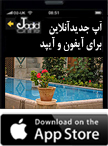Lucinda H. Dunn
In Iraq, with its history of sectarian violence, the cultural festival of Nowruz (New Day) has become a welcome symbol of solidarity for the Kurdish people. At sunset on 20th March in Erbil, the capital of Kurdistan, all inhabitants, young, old, male, female, Sunni and Christian will leave the comfort of their homes and their political divisions behind to gather, dance and sing around a central fire in the Park-e Shahnadar.
“Nowruz has become a symbol of freedom and solidarity for the Kurdish people of Iraq,” explains Tahir Osman, the Deputy Governor of Erbil. “Everybody gathers together to say ‘We are here and we are together’. For this day we forget politics and remember our culture.”
While the festival of Nowruz is common to all nations of Iranian and Turkic origins, in each society it carries its own significance. Iranian Nowruz is rooted in ancient cultures including the Zoroastrian religion. The first day of spring marks the beginning of the Persian Calendar. Rituals begin on the last Tuesday evening of the year, Chaharshanbe Souri, with the lighting of bonfires over which people jump and chant to renew their souls for the year ahead.
In Iraq, this day also marks the beginning of the unofficial Kurdish New Year. The tradition, however, draws on the Iranian myth of Zahhak, a King who terrorised his subjects by each day gobbling a local youth with one of his two snakeheads. One day Kaveh (Kawa) Ahangar, a local blacksmith who had lost all but one of his sons to the monster, gathers a group of people from his village and sets off to kill the tyrant. Once victorious, Kaveh lights a series of fires on the mountaintop to alert the villagers that they are now safe.
The story invokes the idea of resistance in the face of oppression. Osman explains that under Saddam Hussein and the Ba’ath regime, until about 1985, celebrating Nowruz was illegal and therefore a form of protest. The festival was similarly politicised in Turkey, and more recently in Iran.
Nowadays Iraqi-Kurdish Nowruz festivities are celebrated in peace and are more important in reinforcing cultural ties within the community than defending it from external threat.
Schools close and work stops for three days. People crowd into the bazaar emptying the stalls of traditional Kurdish clothes. Men wear wide flappy trousers and a thick central belt while women display their sparkling ankle-length satin gowns. “I always wear a suit, except for one day in the year, Nowruz, when I put on my traditional Kurdish clothes,” says Osman.
On the evening of the 20th March men and women encircle a large fire, and with their fingers knotted together dance the Rashbalak, a traditional Kurdish dance. The next day, they mark the first day of spring by heading out into the surrounding mountains where they continue festivities with picnicking, more singing and dancing.
Iranian-Kurdish filmmaker, Bahman Ghobadi, who has made films in both Iran and Iraqi Kurdistan compares the Iranian and Iraqi Nowruz celebrations. In Iran Nowruz is celebrated more elaborately, involving other rituals such as sofreh haft sin - a display of seven ingredients including wheat germ, garlic, eggs, apples, vinegar said to aid health - and Sizdah Bedar, the thirteenth day of the festival when people leave their homes and throw their haft sin wheat germ into a flowing river to avoid bad luck.
Rituals aside, Ghobadi feels the value of Nowruz, in both Iran and Iraq, is the opportunity for people to reconnect with nature. “It is a time for people to make contact with the renewed earth. Unfortunately in Iraq there are still mines scattered in the mountains so people are afraid to wander too far and prefer to stick to the river beds.” However in one Kurdish village, Akre, situated in a valley in the northern Mosul region, nature plays a key role in Nowruz celebrations. As in the myth of Zahhak, youths brandishing fire torches gather in the central square and file up the mountain in a stunning jagged fire walk lighting a giant bonfire upon reaching the top. And as a sign of national solidarity, an oversized Kurdish flag is simultaneously lowered down the mountainside. For the people of this region starved of their identity for so long, traditional culture and nationalism must go hand in hand.
In this multimedia report we visit Iraqi Kurdistan to watch these elaborate Nowruz celebrations.


